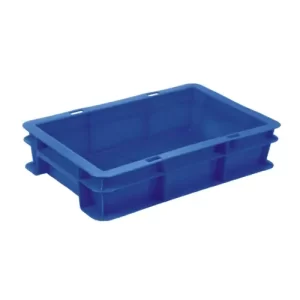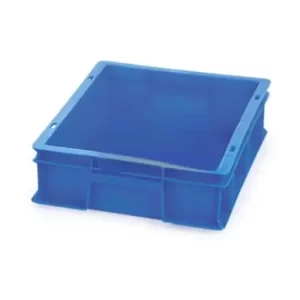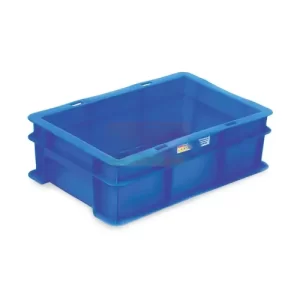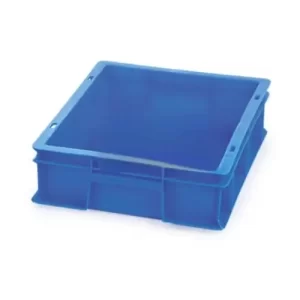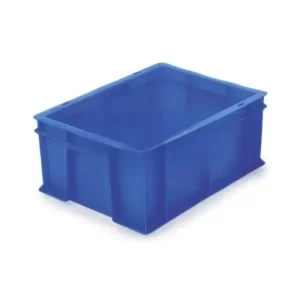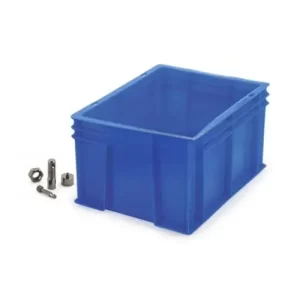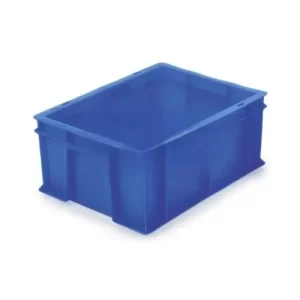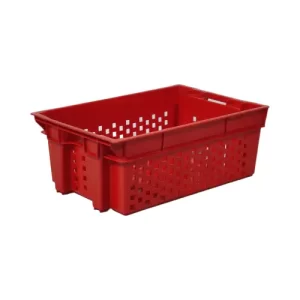Showing 33–43 of 43 results
-
Plastic Crates APCL-43065
Read more -
Plastic Crates APCL-43100
Read more -
Plastic Crates APCL-43120
Read more -
Plastic Crates APCL-43150
Read more -
Plastic Crates APCL-43175
Read more -
Plastic Crates APCL-43220
Read more -
Plastic Crates APCL-43240
Read more -
Plastic Crates APCL-43320
Read more -
Plastic Crates LID-3200
Read more -
Toast Crate Big
Read more -
Vegetable Crate
Read more
Plastic Crates
A Sustainable and Versatile Storage Solution
Are you in need of a storage solution that is not only versatile but also sustainable? Look no further than plastic crates. These nifty containers are not just for transporting goods anymore; they have become an essential part of organizing and storing items in various settings. In this article, we will explore the benefits of plastic crates and why they are a valuable addition to any storage system.
Plastic crates offer several advantages over other storage options. Firstly, they are incredibly durable, ensuring that your items are well-protected and secure. They can withstand heavy loads and are resistant to external forces such as impact or moisture. Secondly, plastic crates are highly versatile; they come in different sizes and shapes to suit various storage needs. Whether you are organizing your pantry, decluttering your garage, or transporting goods, there is a plastic crate that will fit the bill. Lastly, these crates are sustainable. Made from recycled materials, they are an eco-friendly choice for those looking to reduce their environmental footprint.
So, if you are searching for a storage solution that ticks all the boxes, plastic crates are the way to go. With their durability, versatility, and sustainability, they are a must-have for any organization or individual looking for a reliable and eco-friendly storage option.
Advantages of using plastic crates for storage
Plastic crates offer several advantages over other storage options. Firstly, they are incredibly durable, ensuring that your items are well-protected and secure. Unlike cardboard boxes or wooden crates that can easily get damaged or deteriorate over time, plastic crates can withstand heavy loads and are resistant to external forces such as impact or moisture. This makes them ideal for storing fragile or valuable items, as they provide an extra layer of protection.
Secondly, plastic crates are highly versatile; they come in different sizes and shapes to suit various storage needs. Whether you are organizing your pantry, decluttering your garage, or transporting goods, there is a plastic crate that will fit the bill. You can find crates with handles for easy carrying, stackable crates for maximizing vertical space, and even collapsible crates for convenient storage when not in use. The versatility of plastic crates makes them a practical choice for any storage situation.
Lastly, these crates are sustainable. Made from recycled materials, they are an eco-friendly choice for those looking to reduce their environmental footprint. By opting for plastic crates instead of single-use cardboard boxes, you are contributing to the circular economy and helping to minimize waste. Plastic crates can be used repeatedly, reducing the need for constant replacement and disposal. Additionally, at the end of their lifespan, plastic crates can be recycled once again, further reducing their impact on the environment. Choosing sustainable storage solutions like plastic crates is a small but meaningful step towards a greener future.
Environmental benefits of plastic crates
When it comes to sustainability, plastic crates shine in comparison to other storage options. As mentioned earlier, plastic crates are made from recycled materials, which helps to conserve natural resources and reduce energy consumption during the manufacturing process. Additionally, the durability of plastic crates means that they have a longer lifespan compared to other storage containers. This means fewer crates being produced and disposed of over time, resulting in less waste ending up in landfills.
Moreover, plastic crates are lightweight, which offers environmental benefits during transportation. Their lightweight nature reduces fuel consumption and carbon emissions when they are being transported, contributing to a lower carbon footprint. By using plastic crates for storage and transportation, you are playing a part in minimizing the environmental impact caused by traditional storage options.
Versatility and durability of plastic crates
One of the key advantages of plastic crates is their versatility. They can be used in a wide range of settings and industries, making them a practical choice for various storage needs. In retail, plastic crates are commonly used for storing and displaying products. They can be easily stacked and arranged, maximizing space in stores and warehouses. Plastic crates are also a popular choice in the agriculture industry, where they are used for transporting fruits, vegetables, and other produce. Their sturdy construction ensures that delicate produce is protected during transportation, reducing the risk of damage.
In the logistics industry, plastic crates are essential for efficient supply chain management. They are designed to be compatible with automated systems, making it easier to handle and track inventory. The durability of plastic crates ensures that they can withstand the rigors of transportation and handling, maintaining the integrity of the goods being stored. Moreover, plastic crates are hygienic and easy to clean, making them suitable for industries that require strict cleanliness standards, such as healthcare and pharmaceuticals.
Different types and sizes of plastic crates
Plastic crates come in a variety of sizes and shapes, allowing you to choose the right one for your specific storage needs. From small, compartmentalized crates for organizing small items to large, heavy-duty crates for bulky items, there is a plastic crate for every purpose. Some crates even have specialized features, such as dividers or lids, to further enhance their functionality. Selecting the appropriate size and type of plastic crate ensures that your items are stored efficiently and securely.
When choosing a plastic crate, consider factors such as the weight and dimensions of the items you plan to store, as well as the available storage space. If you require easy access to the contents, opt for crates with stackable or nestable features. Additionally, consider the compatibility of the plastic crates with any existing storage systems you may have. By carefully selecting the right plastic crate, you can optimize your storage space and streamline your organization process.
How to choose the right plastic crate for your needs
Selecting the right plastic crate for your storage needs involves considering several factors. Firstly, assess the size and weight of the items you plan to store. Ensure that the plastic crate can accommodate the dimensions and weight of your items without compromising its structural integrity. If you are unsure, opt for a slightly larger crate to allow for future storage needs.
Next, consider the storage space available. Measure the dimensions of the area where the plastic crate will be placed to ensure a proper fit. Take note of any height restrictions or space limitations that may affect your choice of crate size or shape. Remember to also consider the accessibility of the contents; if you need frequent access, choose stackable or nestable crates that can be easily opened and closed.
Another important consideration is the material of the plastic crate. Different types of plastic offer varying levels of durability and resistance to impact or moisture. If you require a crate that can withstand harsh conditions or frequent handling, opt for high-density polyethylene (HDPE) or polypropylene (PP) crates. These materials are known for their strength and resilience. On the other hand, if you need a lightweight crate for less demanding storage needs, low-density polyethylene (LDPE) crates may be suitable.
As mentioned earlier, plastic crates have become indispensable in various industries. In the retail sector, plastic crates are widely used for storing and displaying products. They are stackable, which saves valuable floor space, and their durability ensures that products are protected during transportation and handling. Plastic crates also offer excellent visibility, allowing customers to easily see the contents, which can lead to increased sales.
In the agriculture industry, plastic crates are commonly used for harvesting, transporting, and storing fruits, vegetables, and other perishable produce. Their robust construction ensures that delicate produce is protected from damage, while their lightweight nature reduces transportation costs. Plastic crates also provide ventilation, allowing air to circulate and prevent spoilage. Moreover, they are easy to clean, ensuring hygiene standards are met.
In the logistics industry, plastic crates are essential for efficient supply chain management. They are compatible with automated systems, allowing for seamless integration into warehouse operations. Plastic crates are designed to be durable and stackable, ensuring that goods can be stored and transported efficiently. They are also easy to track and manage, improving inventory accuracy and reducing the risk of lost or misplaced items.
Tips for organizing and maximizing storage space with plastic crates
To make the most of your plastic crates and optimize your storage space, consider the following tips:
1. Categorize and label: Sort items into categories and label each plastic crate accordingly. This makes it easier to locate specific items when you need them and helps maintain an organized storage system.
2. Utilize vertical space: Stackable crates allow you to maximize vertical storage space. Ensure that the crates are sturdy and properly balanced to prevent accidents or collapses. Use a step stool or ladder for safe access to upper levels.
3. Consider weight distribution: Distribute heavy items evenly across multiple crates to prevent overloading and ensure stability. This reduces the risk of crates tipping over or collapsing due to uneven weight distribution.
4. Use dividers or inserts: If you have small items or want to further organize the contents of your plastic crates, consider using dividers or inserts. These accessories help separate and protect delicate or smaller items within the crate.
5. Regularly declutter and reorganize: Periodically reassess your storage needs and remove any items that are no longer necessary. This helps prevent clutter and ensures that your plastic crates are being used efficiently.
Maintenance and care of plastic crates
To ensure that your plastic crates remain in good condition and last for a long time, proper maintenance and care are essential:
1. Regularly clean your plastic crates to remove dirt, dust, and any potential contaminants. Use mild soap or detergent and warm water to clean both the inside and outside of the crate. Avoid using abrasive cleaners or brushes that may scratch the plastic surface.
2. Dry the plastic crates thoroughly before stacking or storing them. Moisture can lead to the growth of mold or mildew, compromising the integrity of the crates.
3. Inspect for any damages, such as cracks or chips, before each use. Damaged crates should be repaired or replaced to ensure the safety of your stored items.
4. Store the plastic crates in a clean and dry area when not in use. Avoid exposing them to extreme temperatures or direct sunlight, as this can cause the plastic to weaken or warp over time.
Conclusion: The future of plastic crates in sustainable storage solutions.
Plastic crates have proven themselves to be a sustainable and versatile storage solution across various industries. Their durability, versatility, and eco-friendly nature make them an attractive choice for organizations and individuals looking for reliable storage options. With their ability to withstand heavy loads, resistance to impact and moisture, and compatibility with various storage systems, plastic crates offer a practical and efficient way to organize and store items. Additionally, their environmental benefits, such as being made from recycled materials and reducing waste, position them as a sustainable alternative to traditional storage options. As we continue to prioritize sustainability and efficiency, plastic crates are set to play a significant role in the future of storage solutions. So, whether you are a retailer, farmer, logistics provider, or simply someone in need of a reliable storage option, consider the benefits of plastic crates and make the switch to a more sustainable storage solution today.


